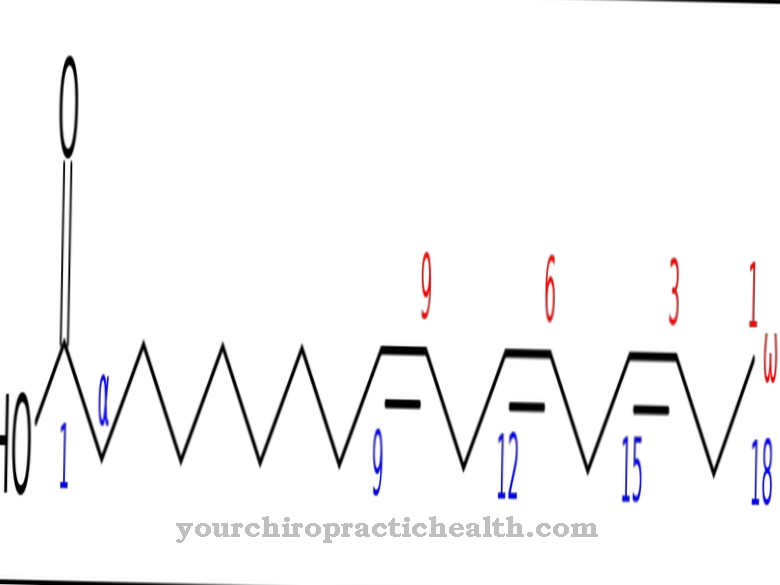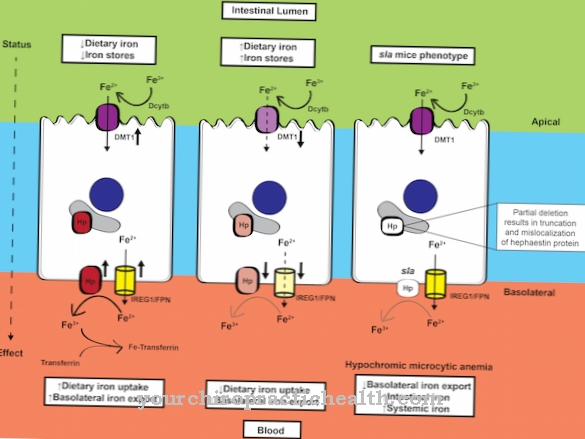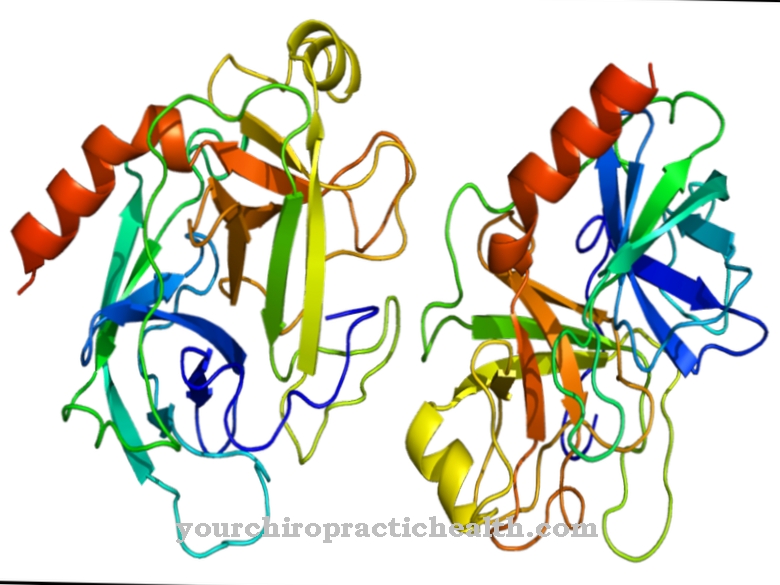At Pseudouridine it is a nucleoside that is a building block of RNA. As such, it is primarily a component of transfer RNA (tRNA) and is involved in translation.
What is pseudouridine?
Pseudouridine is a basic substance of tRNA and consists of two components: the nucleobase uracil and the sugar β-D-ribofuranose. Biology also calls it Psi-uridine and abbreviates it with the Greek letter Psi (Ψ) from.
Pseudouridine is an isomer of the nucleoside uridine: It has the same molecular mass as uridine and consists of exactly the same building blocks. The only difference between pseudouridine and uridine is their different three-dimensional structure. The spatial difference between the two nucleosides is the nucleobase uracil. In the case of uridine, the central ring that the uracil forms consists of a total of four carbon atoms, one NH compound and one nitrogen atom.
In the case of pseudouridine, however, the central basic structure consists of a ring made up of four individual carbon atoms and two NH compounds. Biology therefore also calls pseudouridine a naturally modified nucleoside. It was first discovered in the 1950s and has since been identified as the most abundant modified nucleoside.
Function, effect & tasks
As an RNA nucleobase, pseudouridine is a component of transfer RNA (tRNA). The tRNA appears in the form of short chains and functions as a tool in translation. Biology describes translation as a process in which the information in the genes is translated into proteins.
In humans, genetic information is mainly stored in the form of DNA. Human DNA resides in the nucleus of every cell and does not leave it. Only when the cell divides and the cell nucleus dissolves does the DNA move in the rest of the cell body. So that the cell can still access the information stored in the DNA, it makes a copy of it. This copy is the messenger RNA, or mRNA for short. The eponymous difference between DNA and RNA is the oxygen that attaches to the ribose. After the mRNA has migrated out of the cell nucleus, translation can begin.
The two ends of the tRNA can bind to different molecules. One end of the tRNA is designed in such a way that it exactly matches a triplet of the mRNA, i.e. a group of three consecutive bases. A suitable amino acid docks to the opposite end of the tRNA. The total of twenty amino acids that occur in nature form the building blocks for all existing proteins. A triplet uniquely codes a specific amino acid. A ribosome connects the amino acids that are at one end of the tRNA, creating a long chain. This protein chain folds due to its physical properties and thus receives a characteristic spatial structure.
Both hormones and neurotransmitters as well as building blocks for cells and extracellular structures consist of these chains. When the ribosome links two neighboring amino acids, the tRNA is released again and can take up a new amino acid and transport it to the mRNA. Pseudouridine appears in a side loop of the tRNA. Without pseudouridine, the tRNA would not be functional and the organism would not be able to carry out basic microprocesses.
Education, occurrence, properties & optimal values
The molecular formula for pseudouridine is C9H12N2O6. Pseudouridine consists of the sugar ribose and the nucleobase uracil. Uracil replaces the base thymine in ribonucleic acid (RNA), which is only found in deoxyribonucleic acid (DNA). The other three bases of human nucleic acids are adenine, guanine, and cytosine; they occur in both DNA and RNA.
The sugar ribose has a basic structure made up of five carbon atoms. That is why biology also calls it a pentose. Ribose not only plays a role as a component of the chromosomes; it also occurs in the energy supplier ATP, for example, and acts as a secondary messenger substance in some neuronal and hormonal processes. The human body uses an enzyme called pseudouridine synthase to synthesize pseudouridine. In the case of certain diseases this process can be disturbed. The result is diseases that can typically affect several organ systems.
Diseases & Disorders
In the mitochondria, pseudouridine is also found in the tRNA. Mitochondria are organelles that act as tiny powerhouses in cells. They have their own genetic makeup and are passed on from mothers to their children via the egg cell.
In myopathy with lactic acidosis and sideroblastic anemia, there is a disruption of pseudoruridine synthase. This disease is a muscle disease that is accompanied by anemia. Presumably a mutation prevents the correct formation of the pseudouridine synthase. As a result, the body may produce faulty tRNA that is different from the healthy tRNA. In this form of metabolic myopathy, the abnormal tRNA causes movement intolerance in children and anemia in adolescence. However, it occurs very rarely. Pseudouridine can also be involved in diseases of the eyes, kidneys and other organ systems.
For example, recent research indicates that the concentration of pseudouridine is suitable as a marker for kidney function. So far, doctors have mainly used the creatine level as a marker. The disadvantage of this method, however, is that the creatine level is very prone to errors: it also depends, for example, on the amount of muscle mass. Pseudouridine and C-mannosyl-tryptophan are free from this influence and could therefore replace creatine as a marker for kidney function in the future (Sekula et al., 2015).


.jpg)










.jpg)

.jpg)
.jpg)











.jpg)